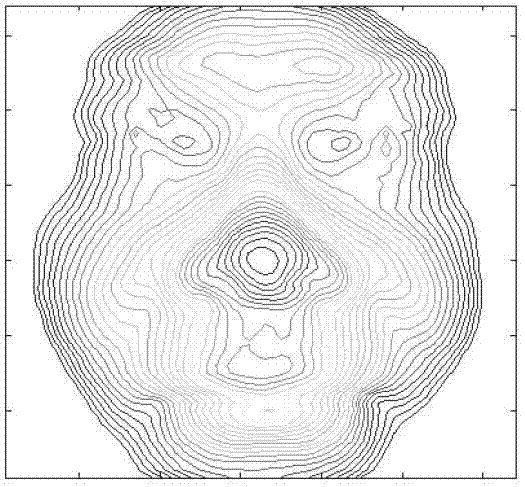Human face identification algorithm based on image sensor imaging system
An image sensor and imaging system technology, applied in the field of face recognition algorithms, to achieve the effect of improving the recognition rate and recognition speed and reducing the complexity
- Summary
- Abstract
- Description
- Claims
- Application Information
AI Technical Summary
Problems solved by technology
Method used
Image
Examples
Embodiment Construction
[0035] The face recognition algorithm based on the image sensor imaging system is characterized in that the steps of the algorithm are as follows:
[0036] (1) Obtain three-dimensional face data through the image sensor imaging system;
[0037] (2) Correct the 3D face data obtained above:
[0038] Manually mark several key points of the face in the face data (such as left eye corner, right and right eye corner, nose tip, etc.), and obtain the head posture changes by comparing the spatial positions of the key points, and further analyze the overall face data. Rotate, interpolate and align to obtain a standard and unified "median" face image;
[0039] (3) Use isodepth lines to represent face data:
[0040] The corrected 3D face data has rich information and a large amount of data. In order to facilitate classification and recognition and improve the recognition speed, isodepth lines are used to describe the surface information of the 3D face; the set of the same depth points o...
PUM
 Login to View More
Login to View More Abstract
Description
Claims
Application Information
 Login to View More
Login to View More - R&D
- Intellectual Property
- Life Sciences
- Materials
- Tech Scout
- Unparalleled Data Quality
- Higher Quality Content
- 60% Fewer Hallucinations
Browse by: Latest US Patents, China's latest patents, Technical Efficacy Thesaurus, Application Domain, Technology Topic, Popular Technical Reports.
© 2025 PatSnap. All rights reserved.Legal|Privacy policy|Modern Slavery Act Transparency Statement|Sitemap|About US| Contact US: help@patsnap.com



